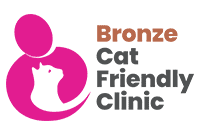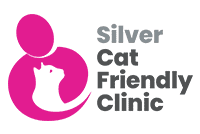Before the anaesthetic with us at Shires Vets
Dogs and cats undergoing general anaesthesia require a period of starvation to prevent vomiting while anaesthetised. If vomiting were to occur while the patient was unconscious, it is possible that the vomited material could enter the lungs and cause pneumonia or death.
Therefore, your pet mustn't be allowed access to food before anaesthesia, for the period prescribed by your veterinary surgeon. In general, for dogs and cats, this is usually a minimum of 6 hours. Commonly, food is allowed up to bedtime the night before the planned procedure.
Smaller patients, such as rabbits, mice, birds etc. are often not fast at all before anaesthesia, as this can have detrimental effects on their blood sugar levels.
It is not usually necessary to deprive your pet of water before an anaesthetic, although all other liquids, such as milk, should be removed at the same time as any food.
Please make sure your dog has had a chance to go to the toilet before bringing it to us at our Shire Vets surgery but avoid a long period of vigorous exercise – a short walk on the lead is sufficient.
This leaflet is designed to help answer some of the questions you may have regarding the administration of a general anaesthetic to your pet. If you have any further queries or concerns, please speak to your veterinary surgeon or nurse.
The need for anaesthetics
While most routine diagnostic procedures such as x-rays are performed in conscious humans, veterinary patients are seldom cooperative enough to lie still for the periods necessary to perform these tasks so general anaesthesia or heavy sedation is often required in animals.
Therefore, while you may think it relatively unusual, your pet may need to be anaesthetised for something as simple as an x-ray of its leg. It might seem logical to assume that heavy sedation may somehow be safer than a full general anaesthetic, however, this is not necessarily the case and you should be guided by the advice of your veterinary surgeon as to which they consider is most appropriate for the particular situation.
Although modern sedative and anaesthetic agents are very safe, all anaesthetics do carry a small risk to the life of the animal. This is usually minimal, but any concerns should be discussed with your veterinary surgeon.
The night before:
For dogs, cats and ferrets please remove food at 9 pm the night before a planned procedure. Ensuring your pet has an empty stomach will reduce the risk of your pet regurgitating under the anaesthetic or sedation.
Water can be safely left down for your pet until you bring them into us the next morning. Please keep cats indoors the night before with a litter tray to prevent access to any food.
Dogs should be taken out for a short walk on a lead to empty their bladder and bowels before coming into the surgery.
Small pets (rabbits, guinea pigs and the like) must have constant access to food and water right up until they come into the surgery.
Please ensure that you bring some of their usual food with them, and it’s a good idea to bring their normal drinking bottle or bowl with you.
The morning of your pet’s anaesthetic:
You may be given a specific time to bring your pet to the surgery. If not, please arrive between 8.30-9.30 am.
If your pet takes any regular medication then please check with the surgery in Staffordshire beforehand whether you are to give this on the morning of admission.
For most procedures you will be seen by the admitting nurse, however, if we have not seen your pet before, or they are booked in for complex investigations you may be admitted directly by the vet involved in your pet’s care for the day.
At admission, you will be asked to read and sign a consent form for the procedure. The consent form explains that there is always a potential risk involved with any anaesthesia or sedatives, however here at Shires Vets, we use human standard anaesthetics which are very safe and the risks involved are minimal.
You will be asked to leave a contact telephone number. Please ensure that you can be immediately contactable between 10 am and 2 pm.
Please read the consent form carefully at admission. The person signing must be over 18. You may request an estimate for the procedure, either before or at the time of admission.
However please be aware that this is an estimate only and that further costs may be incurred should complications arise, or should a procedure prove to be more complex than first thought.
We will make every attempt to contact you should a procedure look likely to exceed the estimate by more than 20%.
After admission
Once your pet has been admitted to us at Shires Vets, they will be weighed and an injection of a pre-med will be given. This is a sedative injection which also gives pain relief as well. Your pet will then be settled into their kennel for the day. All patients are housed in their own kennel, and dogs, cats and small pets all have their own wards.
Please be aware that your pet will have shaved areas. Your pet will be anaesthetized by the veterinary surgeon performing the procedure, and the anaesthetic will be monitored throughout by one of our veterinary nurses or student nurses. After the procedure, your pet will be returned to their kennel to recover, where they will be offered a drink of water and food if necessary.
We will advise you at admission on how to contact the surgery to check on your pet’s progress. In most cases, we will telephone you once your pet is in recovery.
The majority of our patients return home bright and bouncy the same day. You will have written discharge instructions when you collect your pet detailing their home care.
If you have any questions or concerns then please do not hesitate to contact us at Shires Vets.
Pre-operative blood tests
We can offer pre-operative blood tests to check your pet’s internal organ function and to ensure that there is no sign of infection or anaemia. Many of the drugs we use are excreted by the liver and kidneys and if your pet has underlying liver/kidney condition, the anaesthesia may make this worse. We would strongly advise you to consider this test if your pet is over 7 years of age, or has any history of medical problems. However, we are happy to take a preoperative blood sample on any pet should you wish.
Intravenous fluids
If the preoperative blood sample indicates areas of concern, if your pet is elderly or if your pet has a previous history of liver/kidney problems then we will advise that your pet receives intravenous fluid therapy for their anaesthetic. This will assist in maintaining their blood pressure under anaesthesia and help to prevent any further problems. Also, there has been a recent change in regard to Metacam (a painkiller) and anaesthesia; the drug company advise that all patients undergoing anaesthesia and receiving Metacam are given fluid therapy. We have been giving Metacam prior to surgery for years with few problems; however, legally we now have to offer fluid therapy throughout to all patients.
Histology
Without sending your pet’s lump to the laboratory we cannot give you a guarantee about what the lump is. Histology usually takes 5-10 days.
Please be aware that these extra tests/procedures will incur further charges above any estimates that may have been given.










